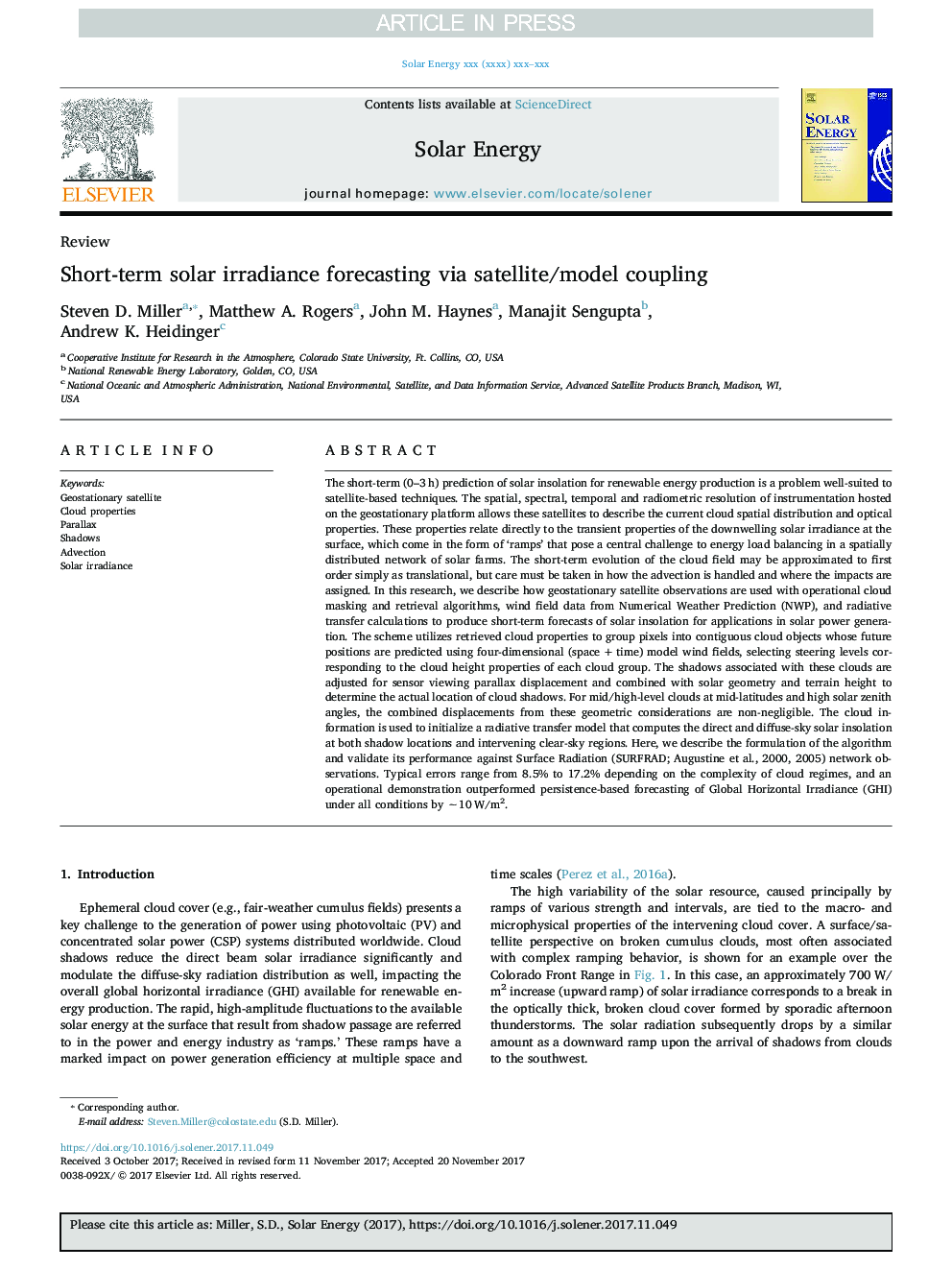| کد مقاله | کد نشریه | سال انتشار | مقاله انگلیسی | نسخه تمام متن |
|---|---|---|---|---|
| 7935203 | 1513050 | 2018 | 16 صفحه PDF | دانلود رایگان |
عنوان انگلیسی مقاله ISI
Short-term solar irradiance forecasting via satellite/model coupling
ترجمه فارسی عنوان
پیش بینی کوتاه مدت تابش خورشیدی از طریق اتصال ماهواره ای / مدل
دانلود مقاله + سفارش ترجمه
دانلود مقاله ISI انگلیسی
رایگان برای ایرانیان
کلمات کلیدی
ماهواره ژئواستره ای خواص ابر، اختلاف منظر، سایه ها، پیشگیری تابش خورشیدی،
موضوعات مرتبط
مهندسی و علوم پایه
مهندسی انرژی
انرژی های تجدید پذیر، توسعه پایدار و محیط زیست
چکیده انگلیسی
The short-term (0-3â¯h) prediction of solar insolation for renewable energy production is a problem well-suited to satellite-based techniques. The spatial, spectral, temporal and radiometric resolution of instrumentation hosted on the geostationary platform allows these satellites to describe the current cloud spatial distribution and optical properties. These properties relate directly to the transient properties of the downwelling solar irradiance at the surface, which come in the form of 'ramps' that pose a central challenge to energy load balancing in a spatially distributed network of solar farms. The short-term evolution of the cloud field may be approximated to first order simply as translational, but care must be taken in how the advection is handled and where the impacts are assigned. In this research, we describe how geostationary satellite observations are used with operational cloud masking and retrieval algorithms, wind field data from Numerical Weather Prediction (NWP), and radiative transfer calculations to produce short-term forecasts of solar insolation for applications in solar power generation. The scheme utilizes retrieved cloud properties to group pixels into contiguous cloud objects whose future positions are predicted using four-dimensional (spaceâ¯+â¯time) model wind fields, selecting steering levels corresponding to the cloud height properties of each cloud group. The shadows associated with these clouds are adjusted for sensor viewing parallax displacement and combined with solar geometry and terrain height to determine the actual location of cloud shadows. For mid/high-level clouds at mid-latitudes and high solar zenith angles, the combined displacements from these geometric considerations are non-negligible. The cloud information is used to initialize a radiative transfer model that computes the direct and diffuse-sky solar insolation at both shadow locations and intervening clear-sky regions. Here, we describe the formulation of the algorithm and validate its performance against Surface Radiation (SURFRAD; Augustine et al., 2000, 2005) network observations. Typical errors range from 8.5% to 17.2% depending on the complexity of cloud regimes, and an operational demonstration outperformed persistence-based forecasting of Global Horizontal Irradiance (GHI) under all conditions by â¼10â¯W/m2.
ناشر
Database: Elsevier - ScienceDirect (ساینس دایرکت)
Journal: Solar Energy - Volume 168, 1 July 2018, Pages 102-117
Journal: Solar Energy - Volume 168, 1 July 2018, Pages 102-117
نویسندگان
Steven D. Miller, Matthew A. Rogers, John M. Haynes, Manajit Sengupta, Andrew K. Heidinger,
